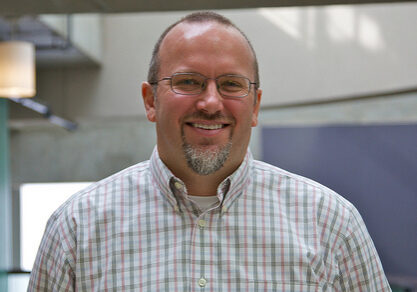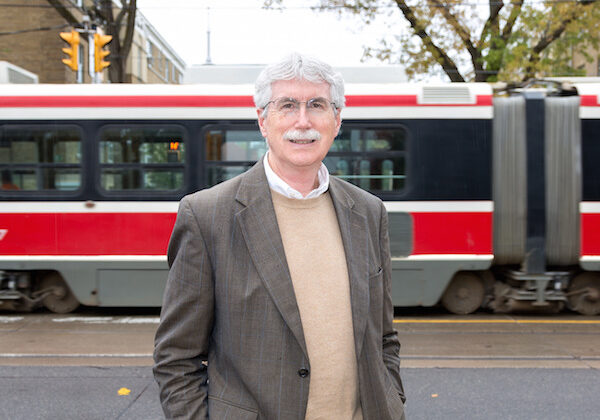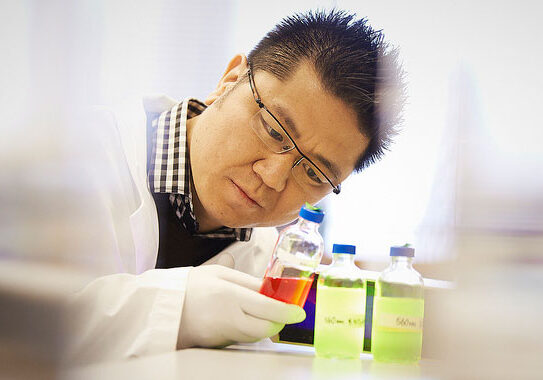
Regenerative medicine conference puts spotlight on U of T engineers
If you or someone you know has benefited from a bone marrow transplant, then you may be more knowledgeable about stem cells and regenerative medicine (RM) than you think. Bone marrow transplants, a procedure used in treating cancer that has been around for the last 40 years, is just one of the applications of stem […]

Engineering alumni startup Nanoleaf launches new product for Apple home system
Nanoleaf, the fast-growing startup from U of T Engineering alumni, launched a new product Oct. 27 tied to Apple’s HomeKit line. “We’ve received Apple’s approval to join the HomeKit ecosystem,” said Nanoleaf spokesperson Leslie Chen. The Nanoleaf Smarter Kit combines “the world’s most energy efficient smart bulb” and a stylish, connected hub with Apple’s Siri-enabled HomeKit, Chen said. This will […]

Craig Simmons receives Heart and Stroke Foundation award to advance cardiovascular research
University of Toronto Engineering professor Craig Simmons (MIE, IBBME) has received the 2015 CP Has Heart Cardiovascular Award from the Heart and Stroke Foundation and Canadian Pacific in the amount of $288,867 to support his research in finding a treatment for diseased heart valves. He is one of 10 researchers to be selected among 454 […]

An open data platform for improving Toronto transportation
This story is Part 6 of a seven-part series, U of T Engineering in the City, running throughout fall 2015. Last Friday, an unmanned octocopter lifted off from a grassy park in a Toronto ravine. It ascended 75 metres and then twisted its mounted camera to scan the volume of traffic moving along Don Mills Road. […]

Engineering a ‘social needs marketplace’ to help the urban poor
This story is Part 4 of a seven-part series, U of T Engineering in the City, running throughout fall 2015. Two years ago, U of T Engineering professor Mark Fox (MIE) spent 36 hours living on the street. He did it partly as a charity fundraiser, but mostly to get a better sense of how the homeless […]

A bumper crop atop U of T Engineering’s Sky Garden
This story is Part 3 of a seven-part series, U of T Engineering in the City, running throughout fall 2015. Every Tuesday through the late summer and early fall, a team of volunteers ascends to the roof of the Galbraith Building on U of T’s St. George Campus. They are there to pick corn, beans, squash, peppers, […]

On the right track: new iCity collaboration addresses Toronto’s transit woes
This story is Part 2 of a seven-part series, U of T Engineering in the City, running throughout fall 2015. Just before leaving by bike to interview U of T transportation guru Eric Miller (CivE), I checked my smartphone for new email. Fifteen minutes later, as I walked into the Galbraith Building on the St. George campus, […]

Plant biosensor could help African farmers fight parasitic “witchweed”
Engineering and biology professors at the University of Toronto have developed a new strategy for helping African farmers fight a parasitic plant that devastates crops. Plants in the genus Striga, also known as witchweed, act as parasites of other plants, tapping into their root systems and hijacking them for their own purposes. Though their purple […]

Warren Chan honoured with Kabiller Young Investigator Award
Professor Warren Chan (IBBME) has received the inaugural Kabiller Young Investigator Award from the International Institute for Nanotechnology at Northwestern University. “I am very honoured to receive this award,” said Chan. “I hope this recognition helps to inspire other young scientists in the field of nanotechnology.” The $10,000 award was presented Oct. 1, 2015 at the […]

